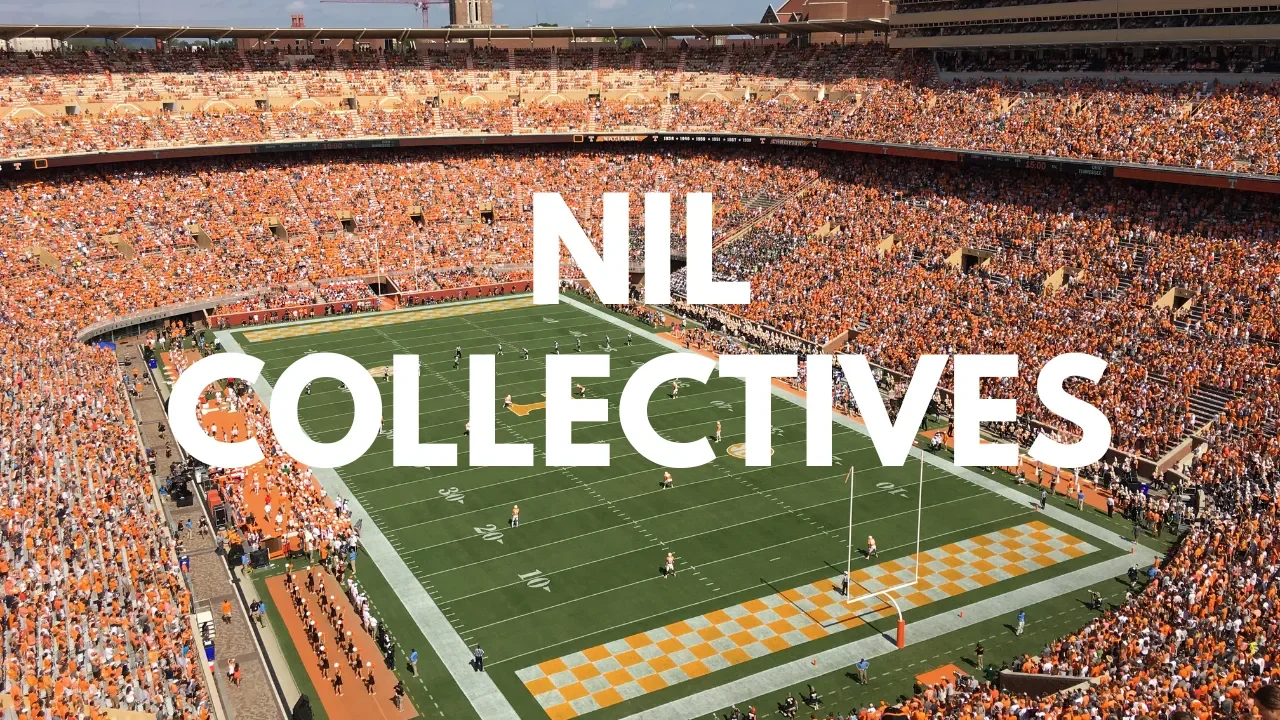NIL Collectives: From Chaos to Clarity
The Evolution of NIL Collectives
The February/March cohort of my 6-week NIL/mba course wrapped up last week - special thanks to Yea Alabama’s Jay Ezelle. Jay was one of our 5 guest speakers and gave a superb presentation on the state of NIL Collectives (some of which I used in my analysis in this week’s newsletter.)
The rise of NIL Collectives has reshaped college athletics in ways few could have predicted just a few years ago. From booster-driven arms races to the latest regulatory shifts under the House settlement, the landscape continues to evolve rapidly.
Let’s break it down.
The Origins of Collectives: A Rapid Response to Alston
Before NIL, the NCAA operated under a strict amateurism model. But by 2021, that model was crumbling. Several states passed laws granting athletes NIL rights, forcing the NCAA to act.
Then came the Alston v. NCAA decision. While the ruling focused on education-related benefits, Justice Brett Kavanaugh’s concurrence sent a strong message: the NCAA’s restrictions on athlete compensation might not hold up under antitrust scrutiny.
The NCAA responded with an interim NIL policy that included three key restrictions:
No pay-for-play – NIL compensation had to be tied to legitimate promotional work.
No institutional involvement – Schools couldn’t facilitate NIL deals.
No recruiting inducements – NIL couldn’t be used to lure recruits.
The problem? The NCAA lacked an enforcement mechanism, and without oversight, the marketplace quickly became a free-for-all.
How the Arms Race Began: The Birth of NIL Collectives
With schools unable to directly engage in NIL deals, booster-driven collectives emerged almost overnight.
Florida’s Gator Collective was one of the first to use the term publicly.
Tennessee’s Spyre Sports Group made headlines with an $8 million NIL package for quarterback Nico Iamaleava.
Alabama’s Bryce Young reportedly signed NIL deals worth over seven figures.
This wasn’t traditional NIL—these weren’t endorsement deals with major brands. Instead, Collectives were pooling money from boosters to create teamwide compensation models, essentially functioning as an unofficial salary system.
This led to an immediate competitive escalation. Schools feared falling behind and scrambled to establish collectives capable of securing top talent.
The NCAA’s Failed Attempts at Regulation
Recognizing the chaos, the NCAA issued new guidance in May 2022 attempting to classify collectives as boosters. This meant:
Collectives could not be involved in recruiting.
NIL deals could only be struck with enrolled student-athletes.
But there were two major flaws:
The rule stripped athletes of all leverage. They were expected to commit to a school before knowing their NIL value.
The rule was widely ignored. Coaches and Collectives found ways to communicate, ensuring athletes knew exactly what they could earn before signing.
The NCAA also attempted to flex its enforcement muscle by investigating Miami’s NIL activity. Instead of targeting egregious booster-funded deals, they focused on the Cavinder twins, who had millions of social media followers and clear market value. The move was widely criticized, further weakening confidence in the NCAA’s enforcement capabilities.
Legal Battles Further Weaken the NCAA
By early 2023, states were pushing back.
Attorneys General from Tennessee and Virginia sued the NCAA, arguing that restricting NIL in recruiting violated antitrust laws.
A federal judge ruled against the NCAA, issuing an injunction preventing enforcement of NIL recruiting rules.
The result? NIL recruiting became fully unregulated.
At the same time, the IRS made a statement that Collectives that were established 501(c)(3) organizations could not operate as pass-throughs for athlete payments. This forced many Collectives to restructure or dissolve.
The House Settlement: Revenue Sharing and the Future of Collectives
In 2024, the House settlement introduced the first official revenue-sharing model in college athletics:
Schools can now pay athletes up to $20.5 million annually in a structured system.
Collectives can still provide NIL opportunities but must pass a fair market value (FMV) test.
A new A4 Clearinghouse will regulate these transactions.
This marks a major shift. Previously, Collectives operated with zero oversight. Now, their payments must be tied to actual market value.
How Collectives Will Function Moving Forward
For Power Four programs, the $20.5 million revenue-sharing cap means schools are on a more even playing field. To maintain a competitive edge, Collectives will need to shift their focus to authentic NIL opportunities that pass the FMV test.
That means:
Partnerships with brands.
Media and content opportunities (e.g., athlete documentaries).
Merchandising and licensing (e.g., jerseys, trading cards, memorabilia).
VIP experiences (e.g., meet-and-greets, facility tours).
Expect Collectives to start acting more like marketing agencies rather than unregulated booster funds.
What’s Next for NIL?
With the NCAA’s power fading and new financial structures in place, we’re entering the next phase of NIL.
Revenue sharing will standardize compensation at the Power Four level.
Collectives will become more professionalized, moving away from direct pay-for-play tactics.
The A4 Clearinghouse will become a regulatory force, bringing long-overdue oversight.
Ultimately, this will create more stability in the marketplace. But don’t expect collectives to disappear. They will evolve, just as NIL itself has over the past three years.
For athletic administrators, professional service providers, and entrepreneurs in the NIL space, the next 12-18 months will be critical in determining how these new rules shape the future.
About Bill Carter
Bill has advised brands on Name, Image, Likeness for 25 years—first in pro sports, now at the college level. He was the Co-Founder of the Gen Z sports agency Fuse, which he sold in 2019. In 2020, he founded Student-Athlete Insights and consults on NIL strategy with Fortune 500 companies and 30+ DI universities. Read more about Student-Athlete Insights.

